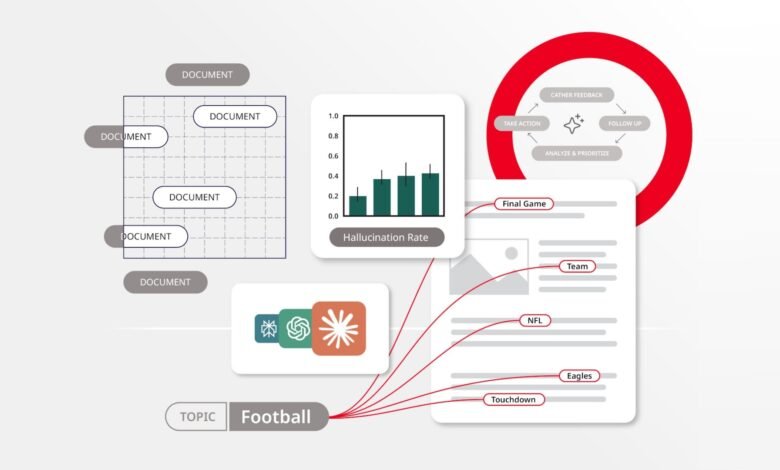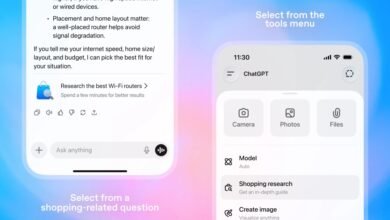From AI Mentions to Strategy: Mastering LLM KPIs

▼ Summary
– Digital marketing success is shifting from traditional metrics like clicks and search rankings to visibility in AI-generated responses from LLMs like ChatGPT.
– Mentions in LLM responses are the new key performance indicator, acting as a diagnostic tool to identify content gaps and opportunities for brand visibility.
– Sentiment analysis of how brands are described in AI outputs provides real-time market perception data to address messaging weaknesses and amplify positive narratives.
– Competitive share of voice benchmarks brand presence against rivals in AI responses, revealing strategic opportunities to defend or gain market position.
– Source citations in AI answers indicate which content is trusted, requiring marketers to publish authoritative, structured resources to become foundational references.
The digital marketing world is undergoing a seismic shift as Large Language Models (LLMs) like ChatGPT, Claude, Gemini, and Perplexity increasingly become the primary source for decision-makers seeking answers. Unlike traditional search engines that provide a list of links, these AI systems generate synthesized responses, fundamentally altering how brands achieve visibility. Being mentioned in these AI-generated answers is becoming the new equivalent of winning a click, making it essential for marketers to adapt their strategies and measurement frameworks accordingly.
This evolution demands a new set of key performance indicators. The challenge extends beyond simple tracking; it requires interpreting these signals to inform actionable strategy. We will examine four core AI KPIs: mentions, sentiment, competitive share of voice, and sources. Each offers a distinct lens through which to view your brand’s position and influence.
Mentions serve as the fundamental visibility test. The most basic question is how often your brand appears in LLM responses to relevant queries. Absence from common category searches, such as “top SaaS tools for analytics,” effectively removes you from the conversation before it even starts. However, mentions are far more than a vanity metric. They act as a powerful diagnostic tool. Analyzing patterns in where you appear, and where you don’t, reveals which parts of your content strategy are effective and which require reinforcement.
To make this data usable, break down mentions by query type. Are you showing up in broad “what is” or “how to” questions, or only in direct competitor comparisons? Are you included in trend discussions but missing from solution-oriented, buying-decision queries? This detailed breakdown pinpoints where to expand your authority. If mentions are low in early-stage educational queries, invest in thought-leadership content that establishes your voice in defining the category. If you are absent from solution-oriented queries, create assets that more clearly explain your differentiators. For marketers, mentions are the equivalent of oxygen; without them, all other efforts are moot.
Sentiment analysis provides the market’s echo. Being mentioned is a start, but how you are described is what truly resonates. LLMs add qualifiers like “fast,” “trusted,” “expensive,” or “hard to use” based on the information they have absorbed. These adjectives reflect the prevailing narrative about your brand in the public domain.
To leverage sentiment, capture the specific language used around your brand. Track whether descriptors are predominantly positive, neutral, or negative. Note recurring themes, are you consistently framed as “enterprise-grade” but also “complex”? Are you praised for “innovation” but criticized for “cost”? Negative sentiment highlights messaging gaps that need addressing. If you are perceived as costly, consider publishing ROI calculators, pricing comparisons, or case studies that demonstrate clear value. If you are seen as complex, invest in content that simplifies onboarding or shares customer success stories. Positive sentiment, conversely, shows which narratives to amplify. If you are consistently described as “trusted,” weave that theme into your campaigns, analyst briefings, and customer storytelling. This analysis turns LLM outputs into a real-time barometer of market perception.
Competitive share of voice offers the benchmark that matters. Mentions and sentiment lack meaningful context without comparing your performance to that of your rivals. This KPI measures your brand’s presence in LLM responses relative to your direct competitors. If you are mentioned in 30% of relevant queries but your main competitor appears in 70%, you are playing catch-up. If you both appear equally often but their sentiment is glowing while yours is neutral, they are winning the perception battle.
Making competitive share actionable involves tracking not only frequency but also the nature of appearances. Which types of queries favor competitors over you? Which attributes are assigned to them versus your brand? These insights create a strategic battle map. If competitors dominate certain question categories, it signals where you need to invest in content and messaging. If their sentiment is consistently stronger, it suggests a need to bolster your proof points or sharpen your differentiators. Conversely, if you are leading in areas where they are weak, that is a narrative advantage to emphasize in your campaigns. For marketers, competitive share acts as a strategy guide, showing where to defend, where to attack, and where you are already winning.
Sources reveal who the AI trusts. Mentions indicate if you are in the story, sentiment shows how you are framed, and competitive share illustrates your relative position. Sources, however, uncover which entities the AI considers authoritative. When an LLM cites a competitor’s whitepaper or an industry analyst’s report instead of your content, it is a clear signal that you are not viewed as the leading authority. Conversely, if your blog post or research study is the cited source, you have secured a position as a trusted voice.
To use source insights effectively, audit which domains and documents are cited when your category is discussed. Are trade publications appearing more frequently than your own website? Are competitors’ research reports being favored? This is where content engineering becomes critical. To become a cited source, your content must be comprehensive, well-structured, and credible. Consider creating FAQ-style pages, data-driven reports, or clearly attributed expert commentary. By publishing content that AI recognizes as authoritative, you shift from simply being mentioned to forming the foundation of the answer. For marketers, this represents the ultimate form of influence, allowing you to control the conversation.
The real value of these AI KPIs lies not in building complex dashboards but in the actionable insights they provide. Mentions highlight visibility gaps, sentiment exposes true market perception, competitive share shows where rivals are gaining ground, and sources reveal who holds authority. Together, they form a strategic compass, directing you to fill content gaps, reframe narratives with stronger proof, defend your market position with sharper messaging, and earn trust by publishing citable resources.
Acting now provides a significant advantage, even though the tooling for tracking these metrics is not yet standardized. Recall the early days of SEO, when brands that learned to optimize before the playbook was written ended up dominating search visibility for years. We are at a similar inflection point with AI KPIs. Waiting for polished tools to emerge means ceding ground to competitors who are already setting the baseline. The process does not need to be overly complex. Even a simple routine of running a set of prompts, logging the responses, and analyzing mentions, sentiment, share, and sources over time can yield intelligence that shapes marketing and content strategy today.
The ascent of LLMs does not erase the value of clicks, impressions, or backlinks, but it fundamentally redefines visibility. Your brand’s story is increasingly being told within AI-generated responses long before a potential buyer ever visits your website. This is why these KPIs are critical. Being mentioned is indeed the new click, but the true advantage comes from using these mentions to make smarter decisions, closing visibility gaps, reframing perception, benchmarking against competitors, and owning citations. Marketers who learn to translate these AI signals into coherent strategy now will not only survive the shift to AI-driven search but will actively shape its future.
(Source: Search Engine Land)





